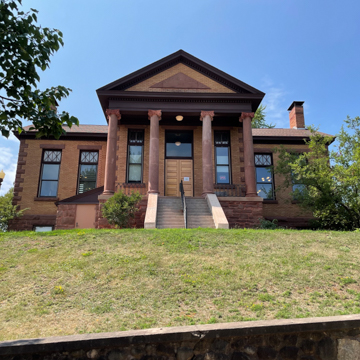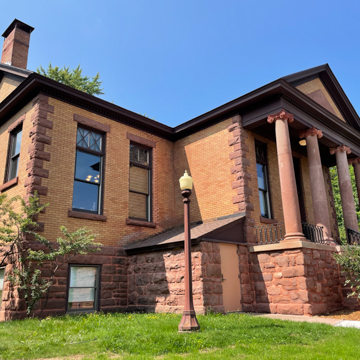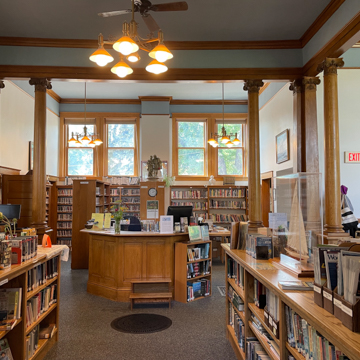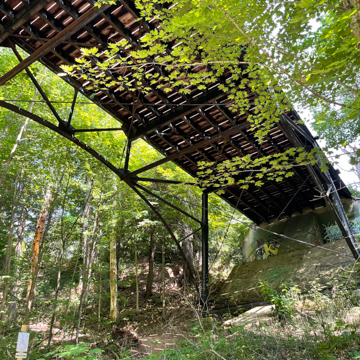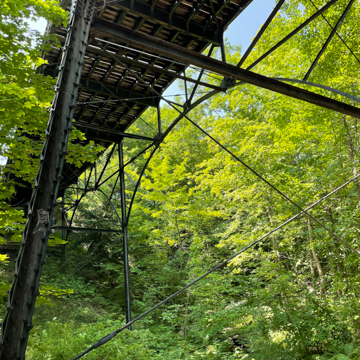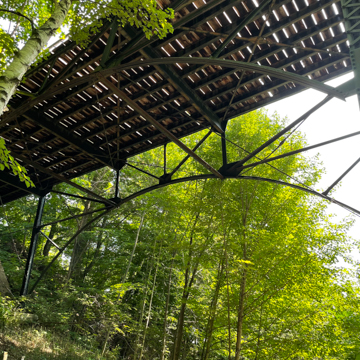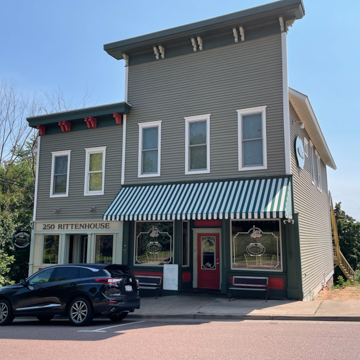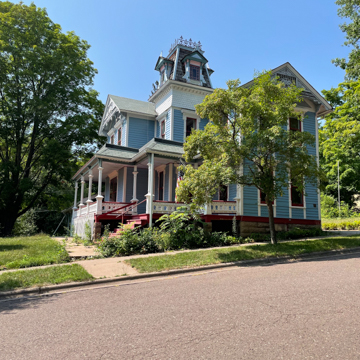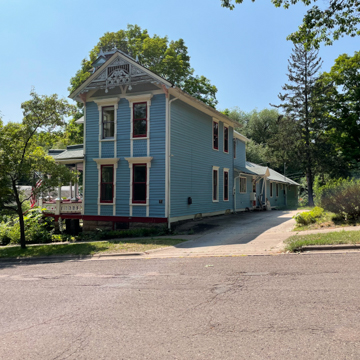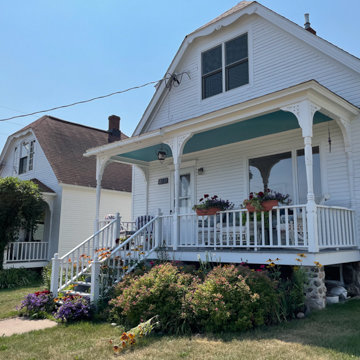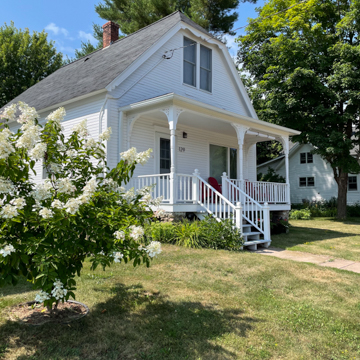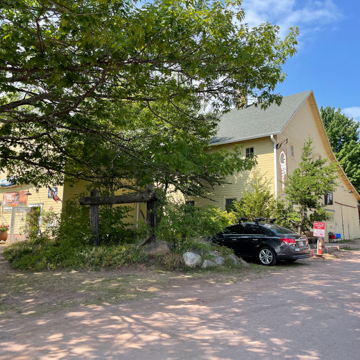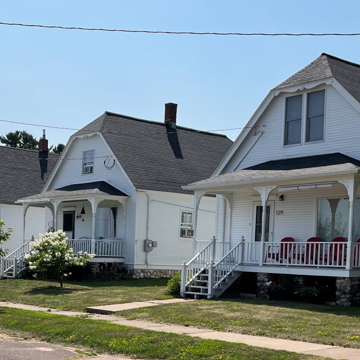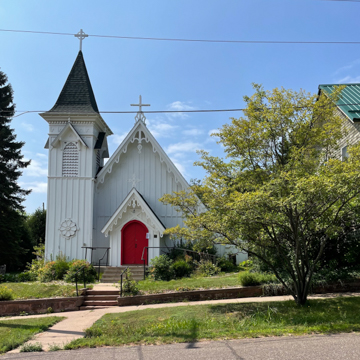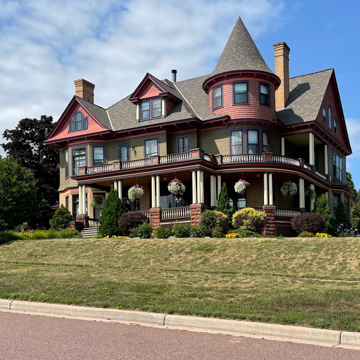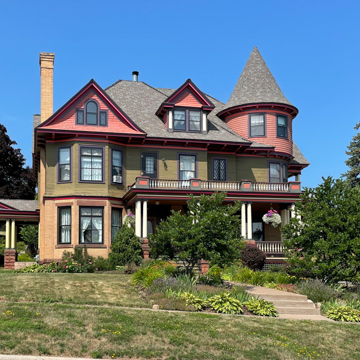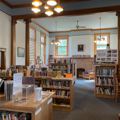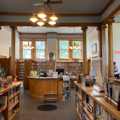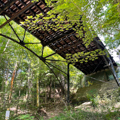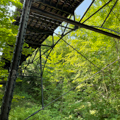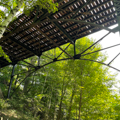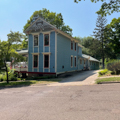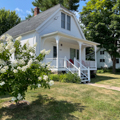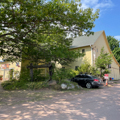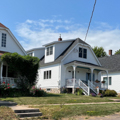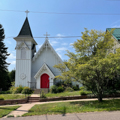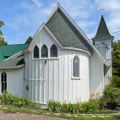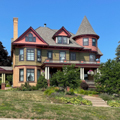Bayfield originated in the 1850s when the Soo Locks opened at Sault Ste. Marie, Michigan, permitting passage of large ships into Lake Superior. Among those who dreamed of inland harbor cities that would rival Chicago as commercial centers for midwestern grain and lumber was Henry Rice, who formed the Bayfield Land Company in 1856. Rice was then a member of the Minnesota territorial legislature, and his investors included prominent politicians and financiers. Bayfield’s dependence on boats for freight transportation, however, hindered early development because the lake was frozen for four or five months each year. Not until the Chicago, St. Paul, Minneapolis and Omaha Railroad arrived in 1883 did the community burgeon, with a three-decade-long building boom. But the railroad sowed the seeds of Bayfield’s eventual decline, for it established Washburn as the principal port on Chequamegon Bay. Moreover, the depletion of forests and the degradation of fisheries caused by logging and lumber milling depressed the local economy until the advent of automobile tourism. Today, Bayfield looks like a charming fishing village frozen in time.
The Bayfield Historic District encompasses most of Bayfield’s original plat, including a rocky waterfront. The village is located on a steeply sloping elbow of land that juts into the lake on the west shore of the bay, offering vistas of Lake Superior and the Apostle Islands. From the shore, the land rises gently to a narrow plateau before sweeping sharply up the hillsides: the Flats, Catholic Hill, School Hill, Cooper Hill, and Swede Hill. Bayfield’s spectacular setting and its harmonious late-nineteenth-century architecture create a village of exceptional visual character. Most buildings are simple vernacular structures constructed of locally milled white pine clapboards, painted white, and many have steep roofs to shed the heavy winter snowfalls. Sprinkled among these modest houses are several high-style examples of Queen Anne and a handful of buildings constructed of locally quarried brownstone, a reddish brown sandstone that was popular for buildings in the second half of the nineteenth century. Many Bayfield houses feature gingerbread brackets under eaves, stained and beveled glass windows, ornamental railings and columns, and patterned shingles. One of the most ornate is the Queen Anne Frank Boutin Jr. House, now an inn (1908; 7 Rice Avenue), of brownstone, brick, clapboard, and shingles on successive levels, creating a rich sense of texture. A sweeping veranda with fluted Ionic columns wraps the first floor and supports a balustraded roof deck. Above are a conical turret and a variety of pedimented dormers and gables.
The Old Iron Bridge on Rice Avenue between 2nd and 3rd streets spans the ravine between Catholic and School hills. Ravines etch Bayfield’s topography, the result of erosion accelerated by clearcut logging practices. The bridge, now restricted to pedestrians, replaced its collapsed predecessor in 1912. The delicate wrought-iron structure, constructed by the Wausau Iron Works, is a deck-truss bridge with open spandrel arches.
Christ Episcopal Church (1870; 1890s additions; formerly the Church Mission of Bayfield) at 125 N. 3rd Street is a delightful Carpenter Gothic building. This picturesque style became popular for country churches after renowned church architect Richard Upjohn promoted it in his pattern book, Upjohn’s Rural Architecture (1852). The board-and-batten walls, steeply pitched roof, slightly pointed entrance arch, and lacy scroll-sawn gingerbread along the front gables are typical. The Queen Anne bell tower was added in 1883. Under its pyramidal roof, it is richly ornamented with pointed arches with scalloped louvers and bracketed gables, which tie it stylistically to the main building. The semicircular apse is an addition of 1893, and the stained glass windows were installed in the 1890s.
Carpenter Theodore Ernst built Bayfield’s most elaborate house (1885; 17 N. 4th Street) for himself and to showcase his skills. His exuberant Queen Anne house includes gingerbread trim, octagonal shingles, a wraparound porch, a mansard-roofed tower, ornately pedimented dormers, and iron roof cresting.
In sharp contrast with the high-style houses are the neighborhoods where Bayfield’s sizeable population of northern European loggers and millworkers once lived. So many Swedish millworkers resided on a rise in the western part of the village that it became known as Swede Hill. One row of Swede Hill cottages (129–141 S. 7th Street), built c. 1910 and partly modified, exemplifies the type of housing available to Bayfield’s working class. These small, one-and-a-half-story cottages have scroll-sawn woodwork ornament, clipped front gables, and turned columns with lacy cutout brackets supporting the hipped porch roofs.
One of Bayfield’s most picturesque views extends from the business district on Rittenhouse Avenue to the lake. Frank Stark operated a grocery and feed store, now a restaurant (c. 1886; 250 Rittenhouse), which has an Italianate false front that rises high above the gabled roof to make the building appear more imposing. The storefront features a recessed entrance and display windows. Ashland architect Henry Wildhagen designed Bayfield’s Carnegie Library (1904; 37 N. Broad Street). Beaux-Arts classical was popular for public buildings in the early twentieth century. This cream brick library, which rises from a brownstone foundation, has a brownstone Ionic portico, quoins, and a pediment.
Several notable properties reflect the importance of the lake to Bayfield’s economy. The Waiting Pavilion (1913; Rittenhouse at Front Street) was built to shelter passengers awaiting excursion boats for the Apostle Islands. A Bayfield women’s group, the Civic League, hired local carpenter William Bell to construct the Queen Anne gazebo with a pyramidal roof, scrolled brackets, and geometric railing. The structure was moved here c. 1920 from a site across the street. The Booth Cooperage, now Trek and Trail (7 Washington Avenue, along the lakeshore), defines the other end of Bayfield’s architectural scale. This plain wooden building, constructed around 1900, was used by two of Bayfield’s fisheries to store and pack fish. Booth Fisheries acquired the building before World War I and converted it into a cooperage, which produced thousands of barrels for packing and shipping salted fish.



